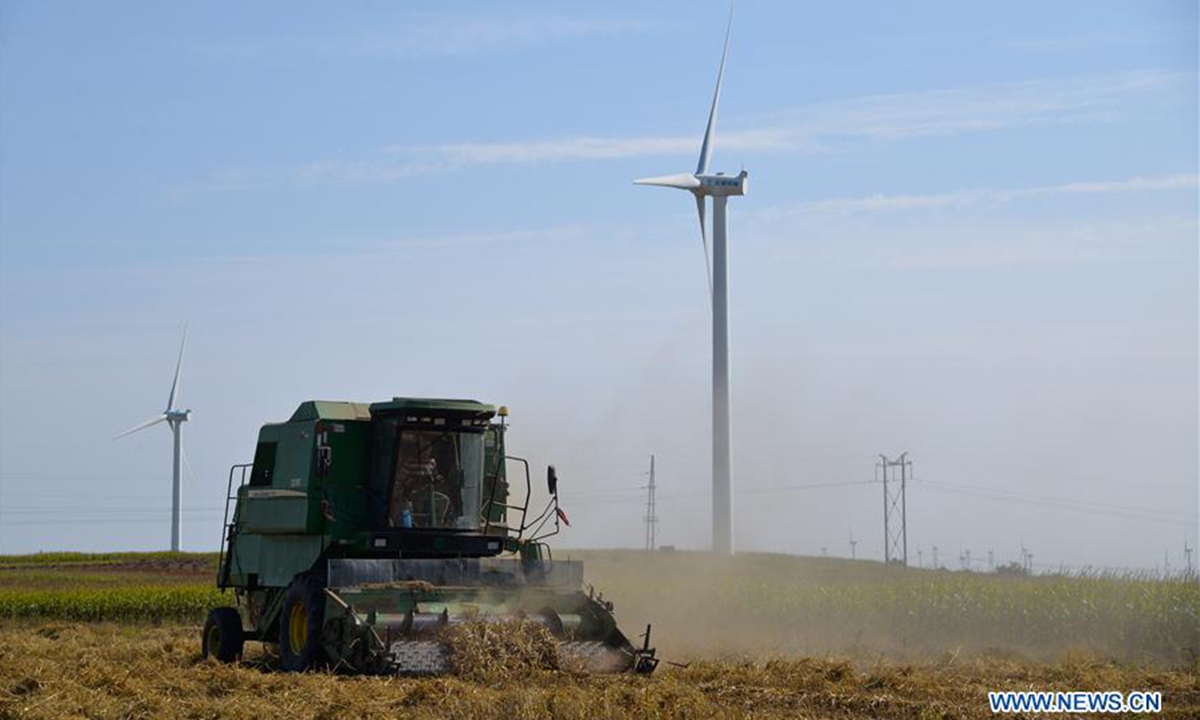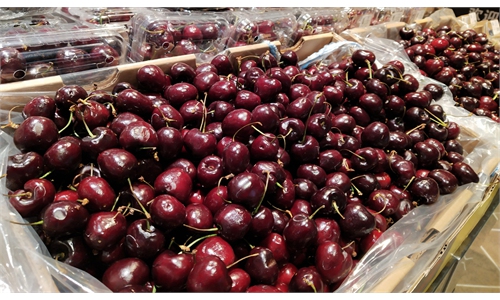SOURCE / INDUSTRIES
China's grain crop harvest hits 650m tons for 6th year, crucial to food security

A reaper harvests grain at Pingyuan Village, Tuquan Township of Tuquan County, Hinggan League, north China's Inner Mongolia Autonomous Region, Sept. 24, 2020. (Xinhua/Xu Qin)
The sown area, output per unit area and total output of grain in China all increased in 2020, with the harvest exceeding 650 million tons for a sixth consecutive year, according to data released by the National Bureau of Statistics (NBS) on Thursday.
Analysts said that stable grain output is crucial to China's food security and social stability, especially amid the COVID-19 pandemic.
China's grain harvest totaled 669.5 million tons in 2020, a year-on-year rise of 0.9 percent. In this category, cereal output - including rice, wheat, corn, barley, sorghum, buckwheat and oats - reached 616.74 million tons, up 0.5 percent.
The national grain cultivation area was 1.752 billion mu (1.168 million square km) in 2020, up 0.6 percent on a yearly basis. The yield per mu was 382 kilograms, up 0.2 percent year-on-year.
Agricultural areas reported more favorable weather and a reduced impact from pests and disease in 2020, said Li Suoqiang, director of the Rural Affairs Department of the NBS, on Thursday.
The NBS data showed that the grain harvest has remained above 650 million tons for six consecutive years.
"Maintaining stable food production and supply is crucial to China's food security and social stability. If the global COVID-19 pandemic drags on, which could lead to unstable food supplies from the world's major food exporters, there may be a wave of food crises that will push up inflation," Zhang Wei, chief research fellow of macroeconomics at Kunlun Health Insurance, told the Global Times on Thursday.
China's grain imports reached 129.202 million tons, up 29.6 percent year-on-year from January to November, figures released by the General Administration of Customs on Monday showed.
Tao Jin, deputy director of the Macroeconomics Center of the Suning Financial Research Institute, said that the size of the harvest will have little impact on the consumer price index (CPI).
"The NBS reduced the weighting of food in the CPI in 2016, and now it's only 2.34 percent, so changes in grain prices have a limited impact on the CPI. However, the increase in grain output has pushed food prices down," Tao told the Global Times on Thursday.
Affected by falling food prices, the CPI will only rise about 1.5 percent in 2021, down from 2.6 percent this year, Deng Yu, senior analyst at Bank of Communications, said.



